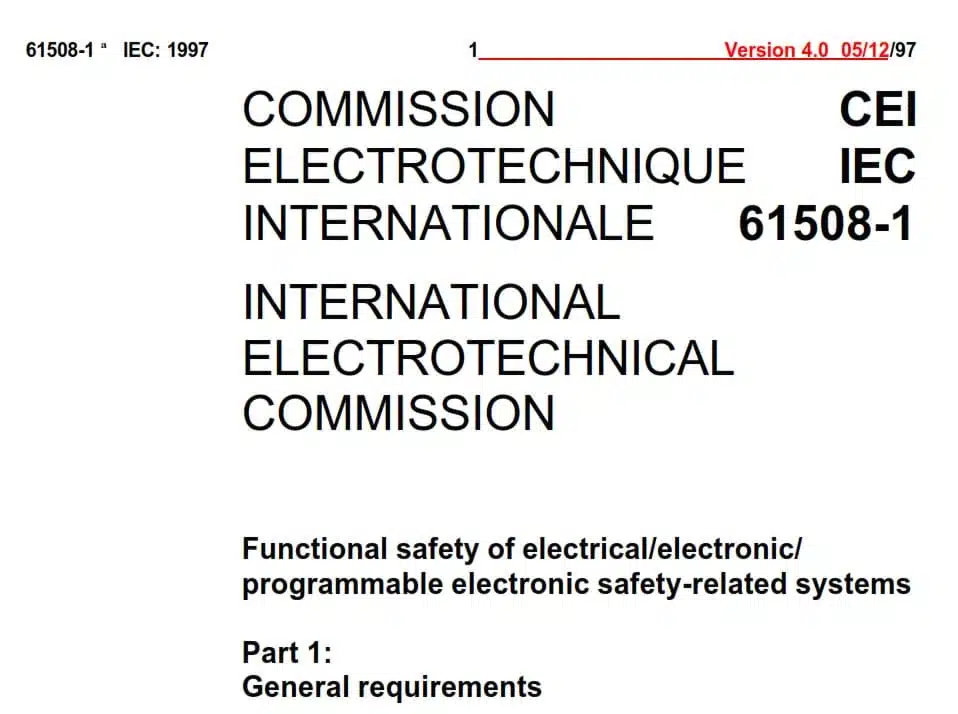Last edit: 26/06/2023

Back in the ‘90’s, Safety functions were more and more carried out by electronic or programmable electronic systems. These systems are usually complex, making it impossible, in practice, to fully determine every failure mode or to test all possible behaviours.
The challenge was to design the system in such a way as to prevent dangerous failures or to control them when they arise. Dangerous failures may arise from:
-
-
- Incorrect specifications of the safety-related control system.
- Omissions in the safety requirements specification (e.g. failure to develop all relevant safety functions during different modes of operation).
- Random hardware failure mechanisms.
- Systematic hardware failure mechanisms.
- Software errors;
- Common cause failures;
- Human error;
- Environmental influences (e.g. electromagnetic, temperature, mechanical phenomena);
-
IEC 61508 contains requirements to minimise these failures and build a reliable safety-related control system. Its aim was:
- Release the potential of E/E/PE technology to improve machinery and process safety.
- Enable technological developments to take place within an overall safety framework.
- Provide a technically sound, system based approach, with sufficient flexibility for the future.
- Provide a risk-based approach for determining the required performance of safety-related control systems.
- Provide a generically-based standard that can be used directly by industry but can also help with developing sector standards (e.g. machinery, process chemical plants, medical or rail) or product standards (e.g. power drive systems);
- Provide a means for users and regulators to gain confidence when using computer-based technology.
Safety in Collaborative Robotics
There is no “Collaborative Robot”. That is one of the first statements you hear from people working in Collaborative Robotics. The reason is because...